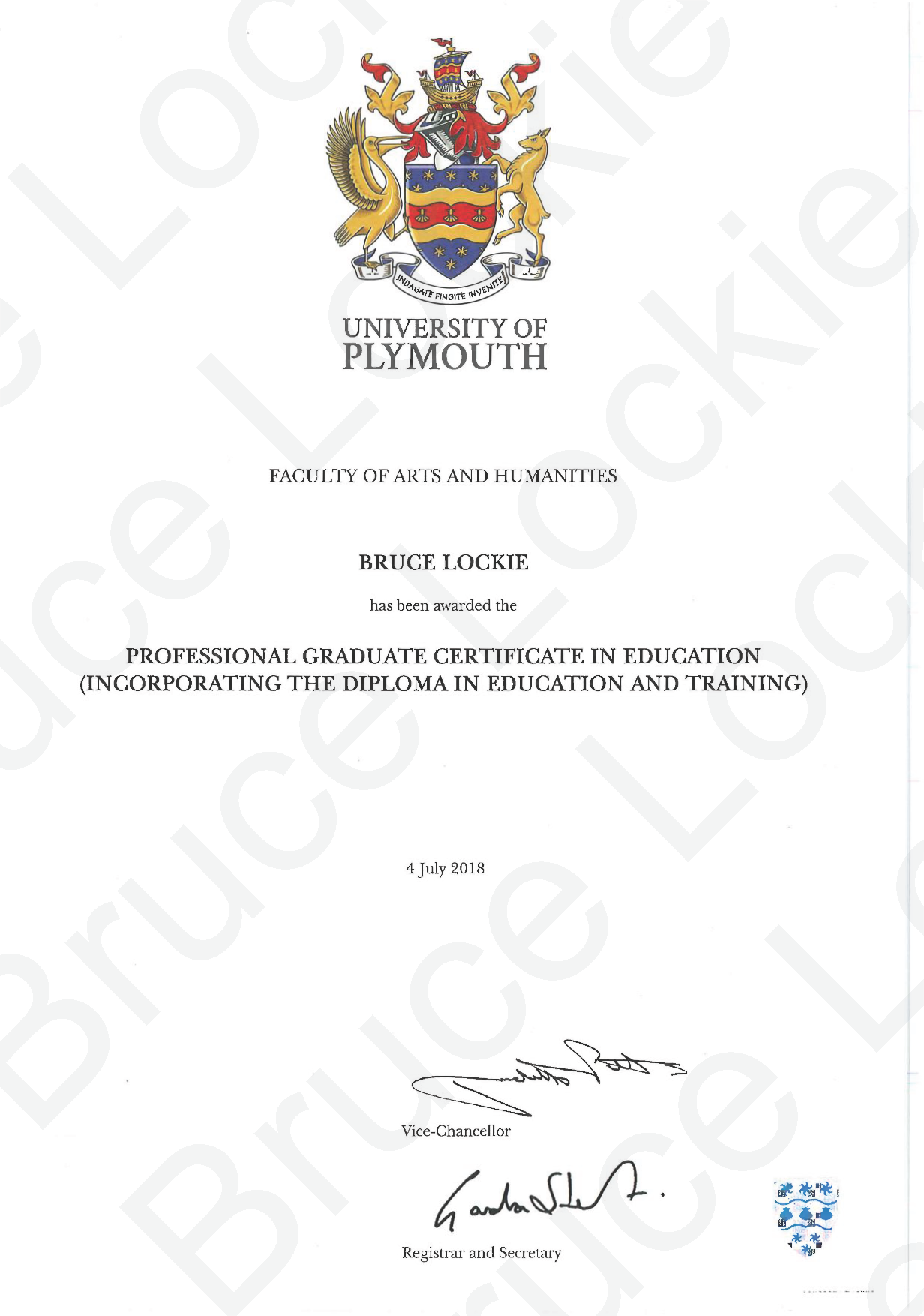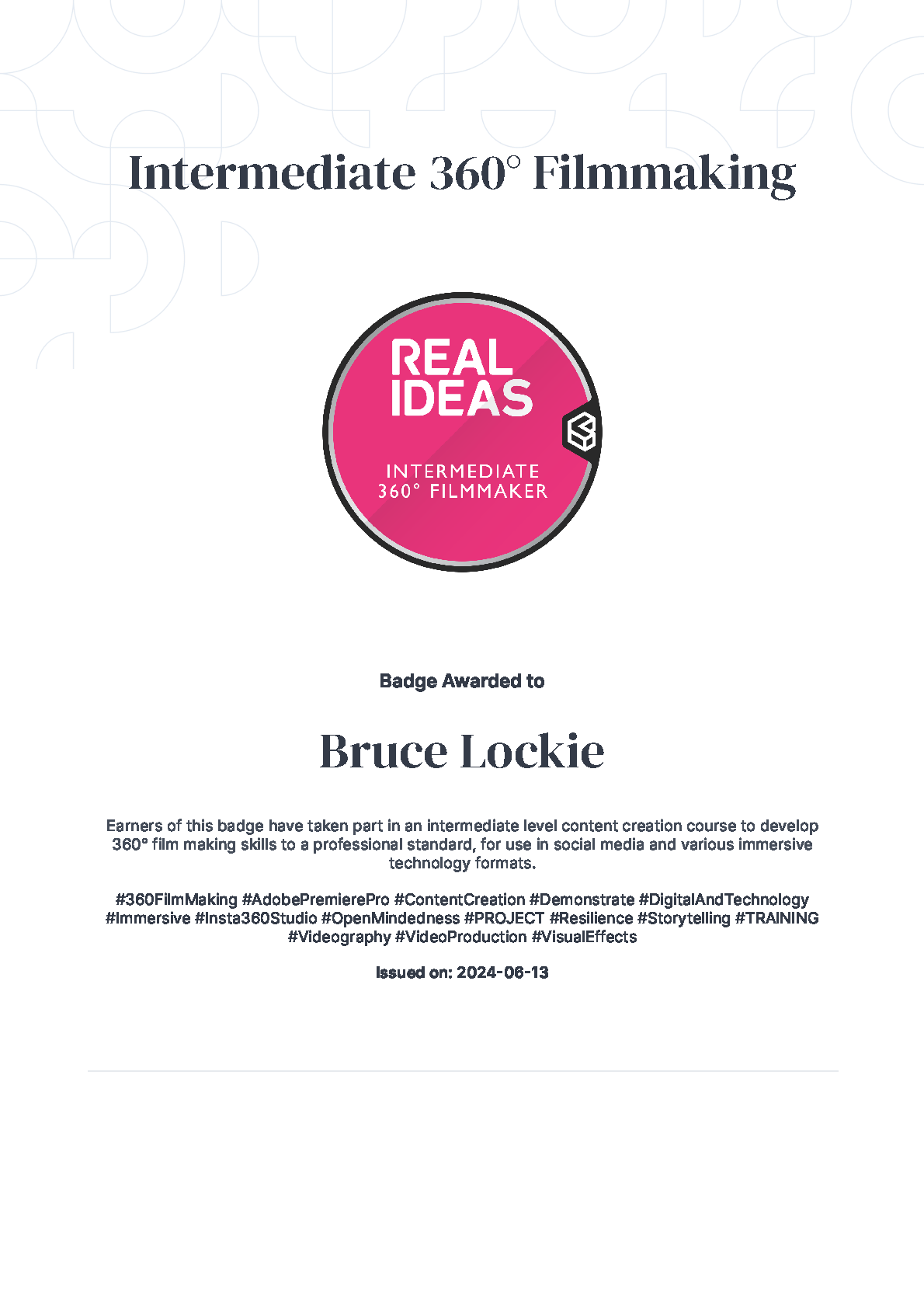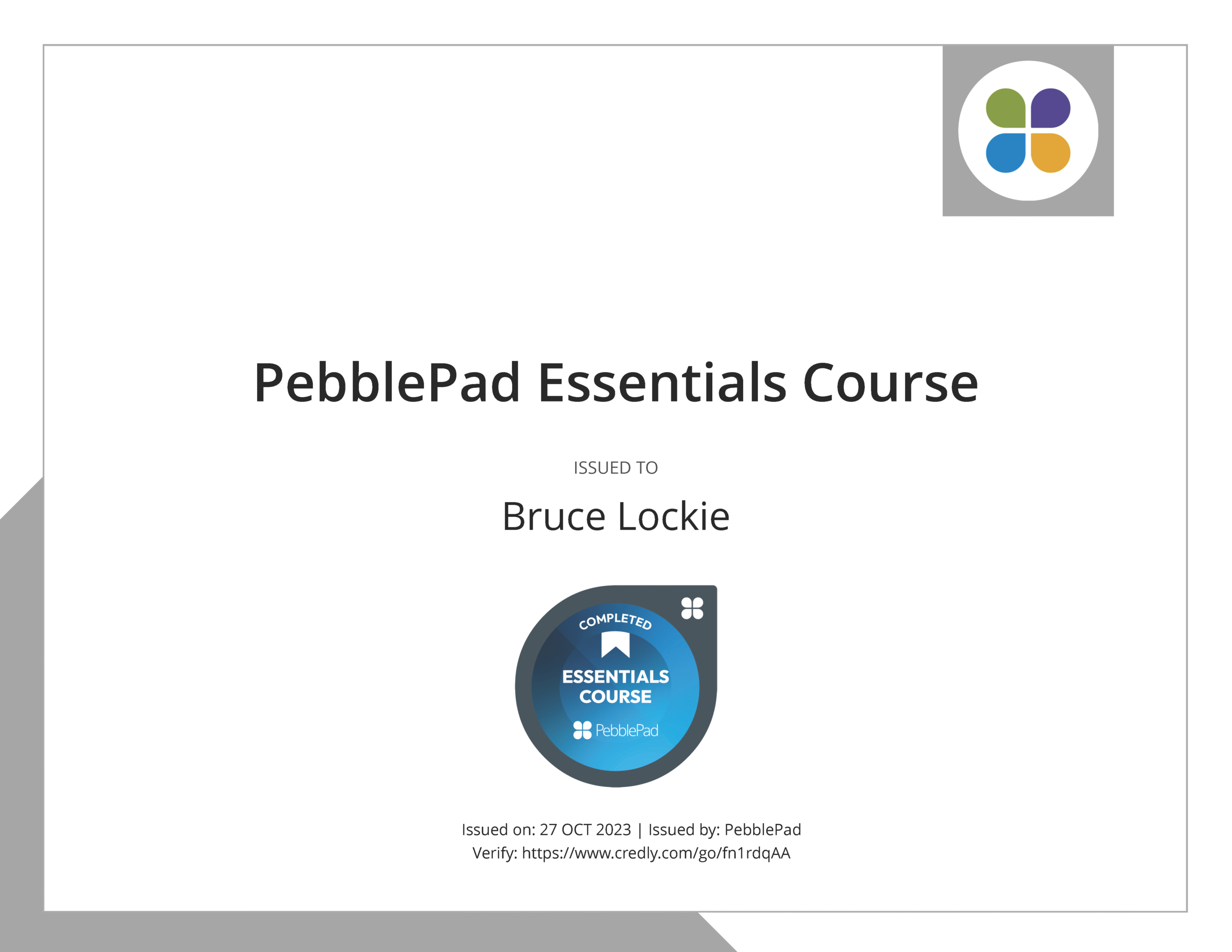An understanding of teaching, learning and/or assessment processes (new version)
Candidates should demonstrate their understanding of and engagement with teaching, learning and assessment processes. ‘Engagement’ may include using understanding to inform the development, adaptation or application of technology. Note that your learners are the people with whom you work. For teaching staff this will typically be students. For many learning technologists this may be students or the staff that you support and train.
CMALT Guidance 2019
Description
My understanding of teaching, learning, and assessment is informed by both my formal qualifications and practical experience. I completed a PGCE (Part-Time, Further Education/Post-16 and Skills Sector) in 2018, where I was introduced to a range of learning theories, including constructivism, experiential learning (Kolb, 1984), and social learning theory (Bandura, 1977). These theories continue to underpin my approach to digital learning design, especially in supporting reflective and competency-based learning within professional programmes 🔴CP1.
In my current work, I support academic staff in embedding effective pedagogical practices using digital tools. This includes curriculum design, assessment planning, and the development of reflective and experiential learning resources—across the university. A key part of this work involves collaborating with course teams to redesign how students engage with competencies and assessments, moving from static, paper-based formats to interactive digital workbooks in PebblePad 🔴CP1 & 🔵CP4. I also support the use of 360-degree media to create immersive, real-world scenarios that enable students to engage with their learning in a dynamic and realistic way, especially in fields like healthcare and paramedic science 🟡CP2.
Alongside reflective practice, I support the design of scaffolded learning using tools such as Moodle to structure modules and programmes, ensuring content is well-organised and aligned with learning outcomes. I work with academics to embed H5P activities for active engagement and Panopto for flipped learning and revision. This approach ensures that both the module and the programme structure support progressive, student-centred learning, enabling staff to track student progress, provide timely feedback, and create cohesive learning experiences 🔴CP1 & 🔵CP4. All design decisions are rooted in pedagogical intent—ensuring that activities are aligned with intended learning outcomes, assessment criteria, and student needs 🔴CP1.
Reflection
My work in teaching, learning, and assessment has been guided by a commitment to supporting both students and academic staff in making the most of digital tools and resources. Through my role, I’ve seen firsthand how the integration of technology can make teaching more engaging and learning more impactful 🟢CP3. The shift from traditional paper-based assessments to digital workbooks in PebblePad, for example, has allowed students to track their competencies and reflect on their learning in real-time, while academics are able to monitor progress and provide feedback that supports student development 🔴CP1.
The use of 360-degree media has further transformed how students experience learning. By creating immersive, real-world scenarios, particularly in healthcare and paramedic science, I’ve seen students engage more meaningfully with content, applying their learning in practical, context-driven environments 🟡CP2. These immersive experiences complement traditional learning methods, offering students hands-on opportunities to explore complex concepts.
Reflecting on the role of digital learning design, I’m particularly proud of how I’ve helped academics move beyond seeing Moodle as a static repository to recognising it as a dynamic space for student-centred learning. The workshops I’ve run on Moodle, H5P, and Panopto have empowered staff to incorporate these tools into their teaching practices confidently, leading to more engaging, inclusive, and accessible course designs 🔵CP4.
Supporting reflective practice in both students and staff has reinforced my belief in the importance of scaffolded learning. Providing ongoing, tailored training and offering technical support has not only built academic confidence but also ensured the long-term sustainability of these digital learning practices across the institution 🟢CP3.
Evidence
Degree & PGCE


Immersive Technologies – 360 Video & VR Content Creation


ePortfolio Training – PebblePad Essentials Course

Core Principle Values
🔴CP1: A commitment to exploring and understanding the interplay between technology and learning.
🟡CP2: A commitment to keep up to date with new technologies.
🟢CP3: An empathy with and willingness to learn from colleagues from different backgrounds and specialist areas.
🔵CP4: A commitment to communicate and disseminate effective practice.